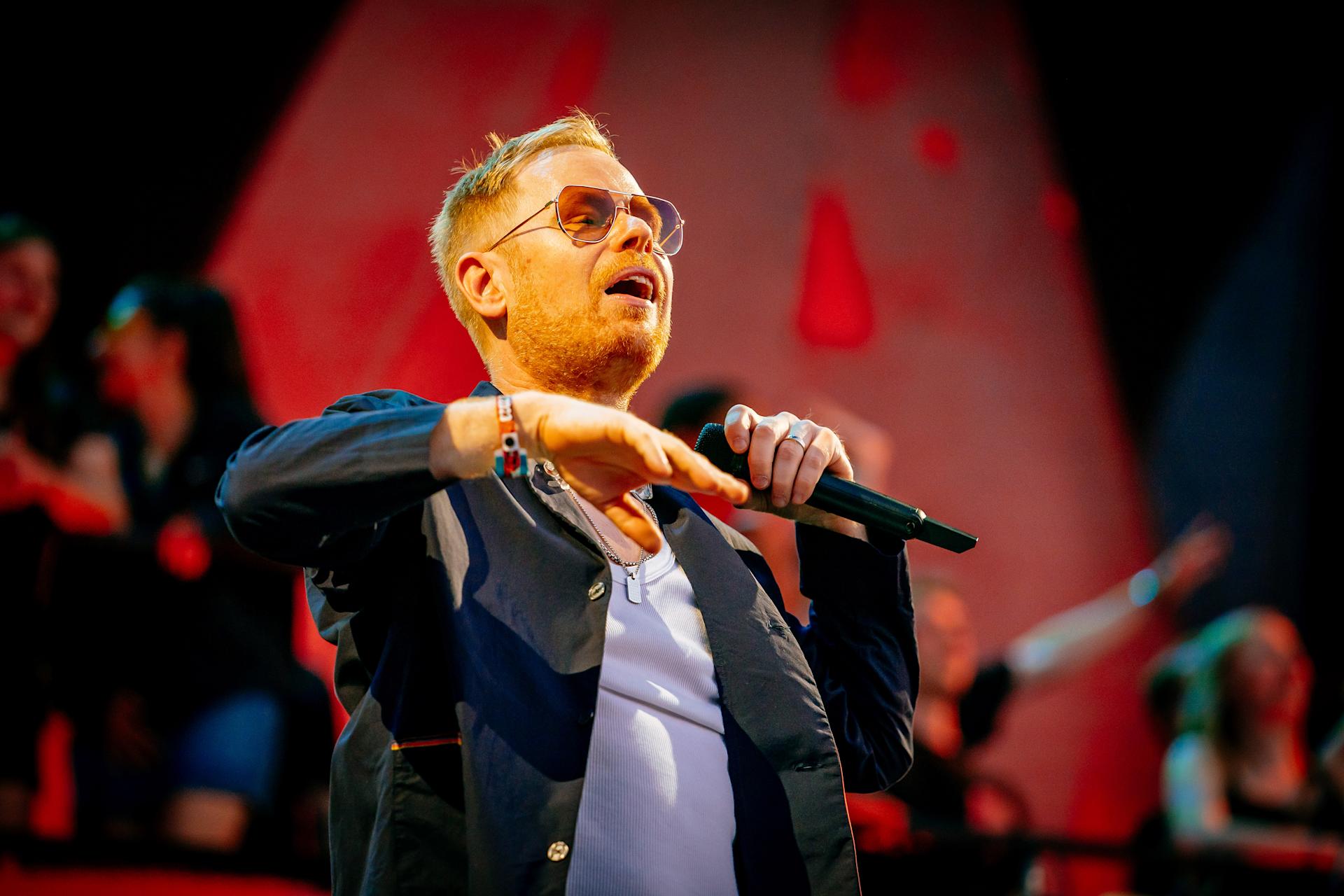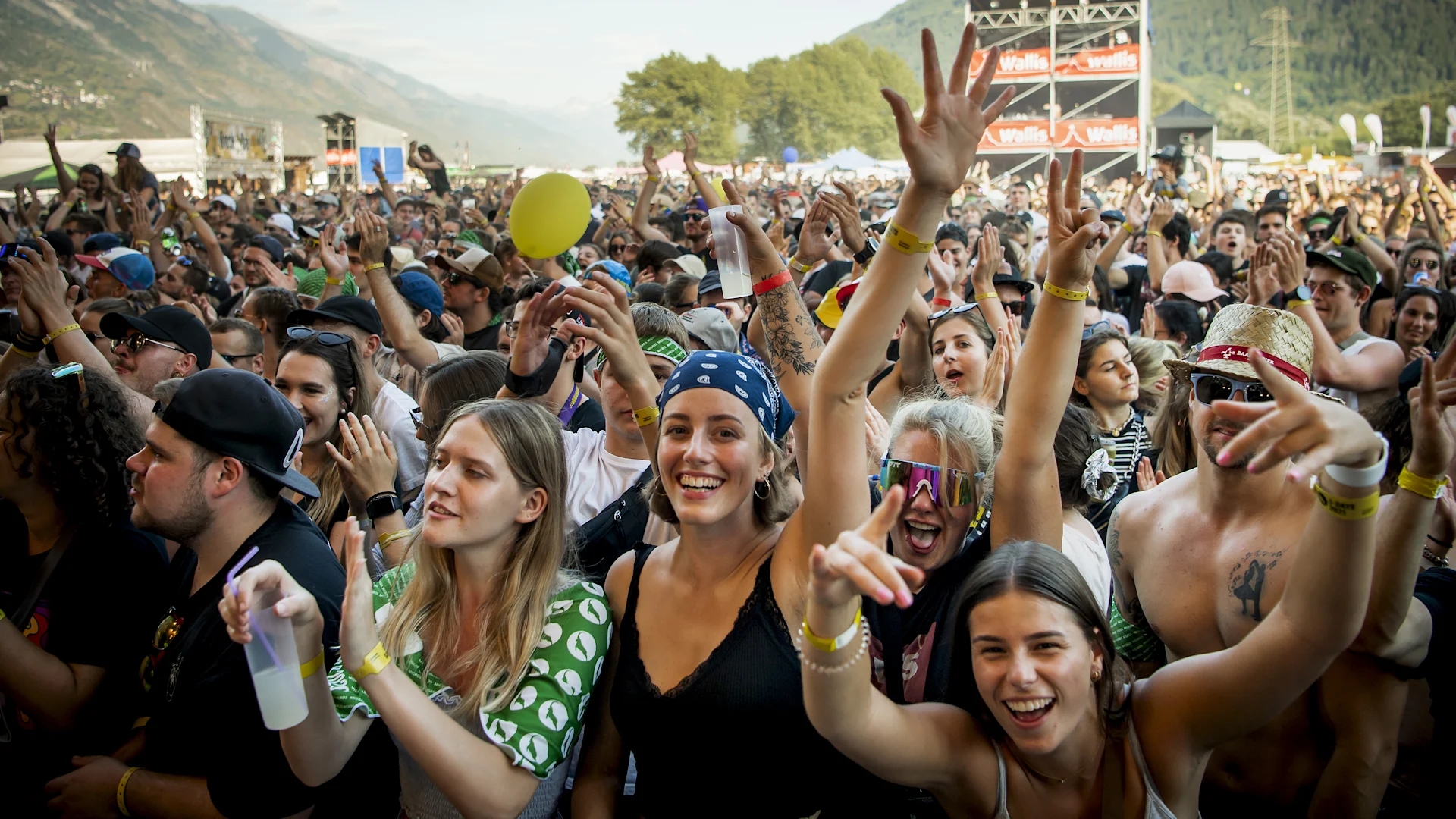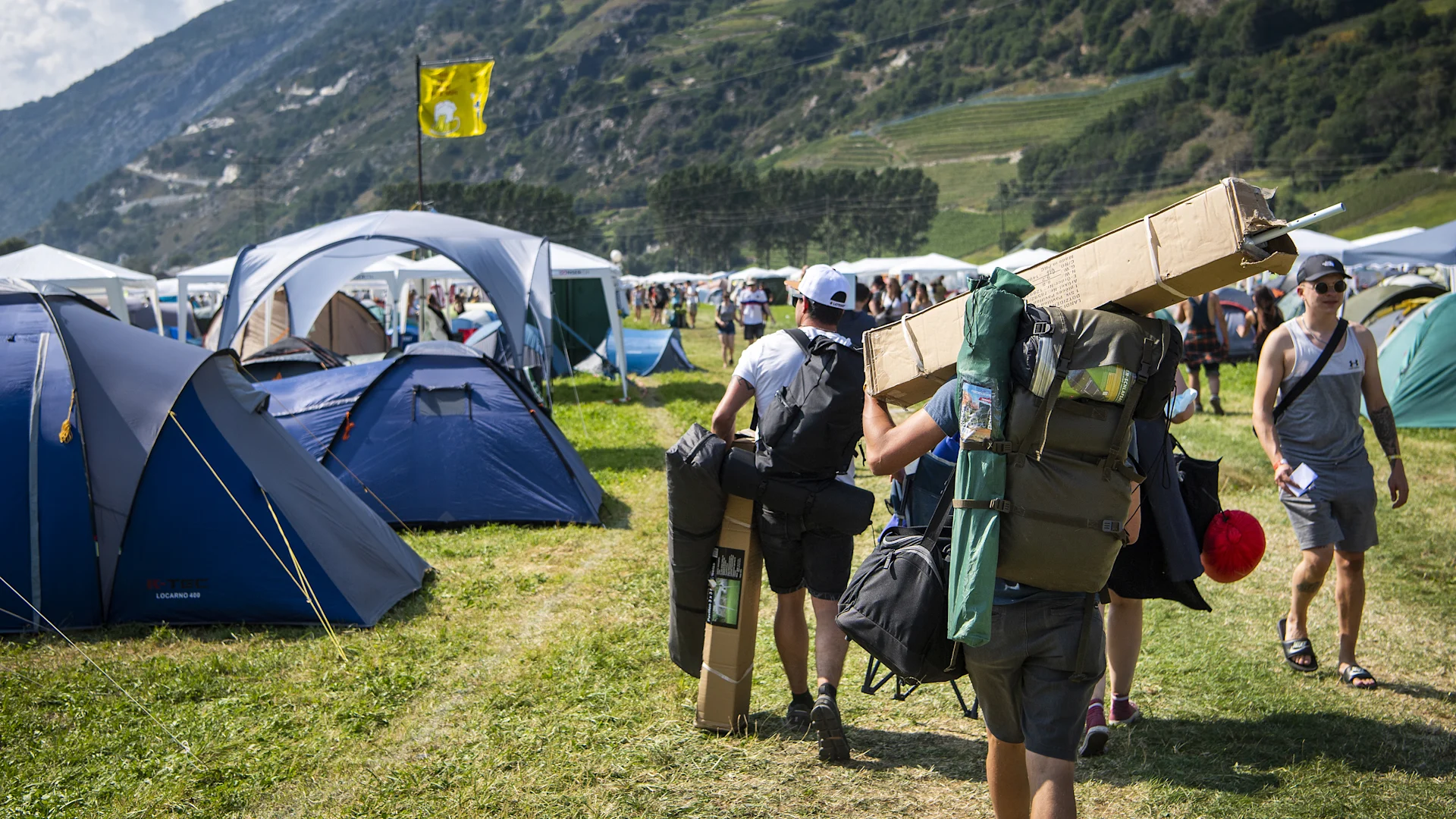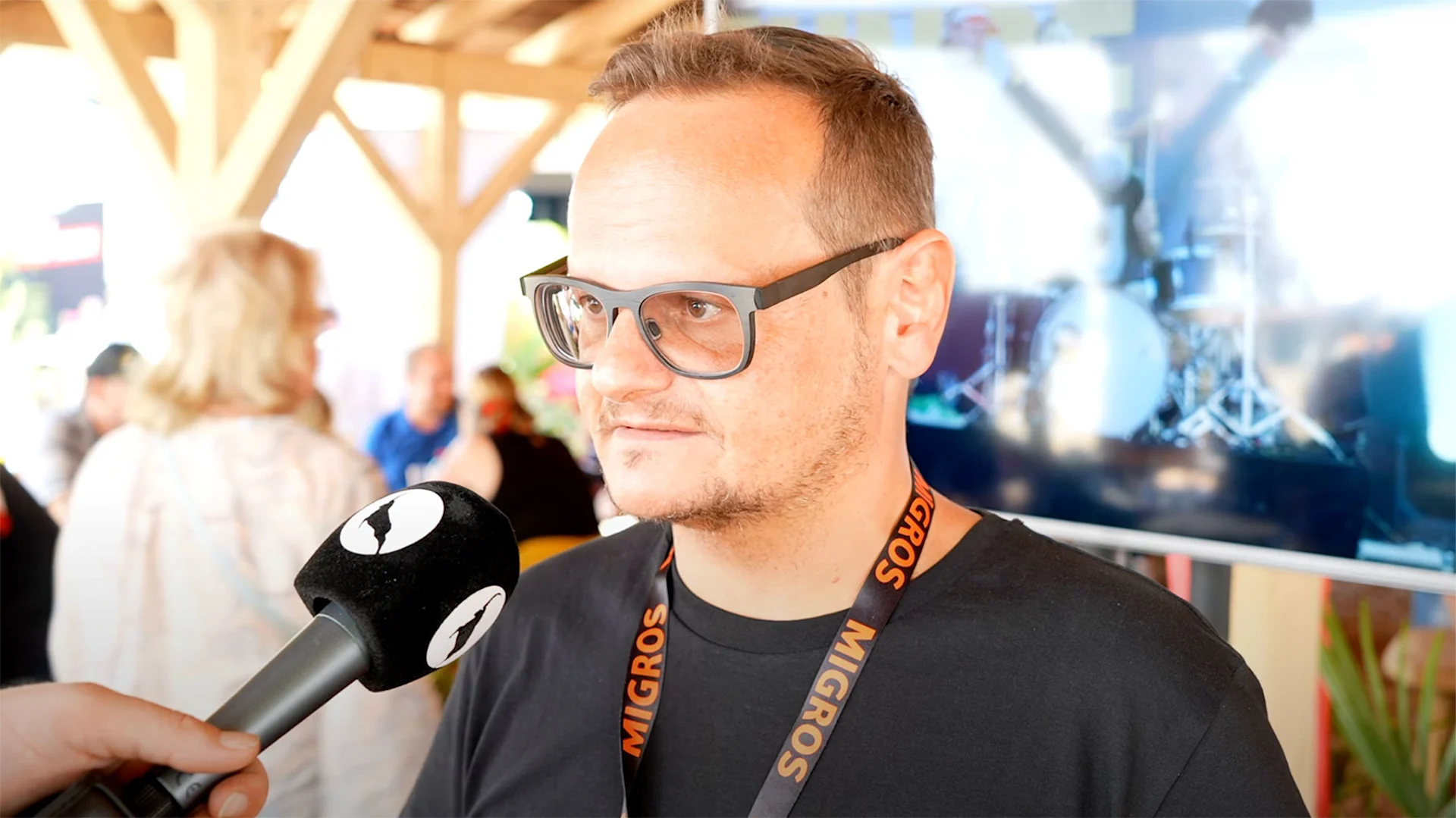
Food waste
Saving food and helping people
A visit to "Tischlein deck dich": members of the FMC Executive Board support the team on site.
navigation

Celebrating, partying and litter picking
What’s left behind when 100,000 fans and hundreds of helpers, artists and performers leave the festival site after four days? If you think of piles of rubbish and broken tents, you might be surprised by the following answers.
When Peter Fox headlines the Red Stage at Openair Gampel on 19 August, thousands will party to the singer of the Berlin band Seeed (and sometimes unintentionally drop some rubbish). What few people might know: Seeed was part of the first scientific study on the topic of sustainability at large concerts in Germany. «It’s important to persist with the issue of sustainability. Personally, politically and systematically. Business as usual is over,» says Peter Fox.
Sustainability is high on the agenda at Openair Gampel. The festival in the Valais has developed a sustainability strategy in collaboration with Migros. This helped to reduce the amount of waste, energy consumption and hence the carbon footprint. At the 2022 festival with 100,000 fans, 10 kg of CO₂ were still generated for each person. For comparison: the Federal Office for the Environment calculates around 12.5 kg of CO₂ per day and person. The amount of waste was reduced by 42 per cent to 74.9 tonnes. Of this, 45.5 per cent was recycled.

The company «acting responsibly», headed by the social scientist Rolf Schwery, is developing platforms and measures for sustainable events together with Migros. For him it’s clear: «Mountains of rubbish at festivals are a thing of the past. Clean separation systems are needed so that it’s not all left lying around. We now have a simple modular system that works well. Today we can collect plastics separately. It is moving towards recovering recyclables instead of disposing of waste.»
With the support of Migros, Openair Gampel has developed a sustainability charter. With this, the organisers want to realise three visions in the next few years: zero waste, strengthening social cohesion and focusing on quality instead of quantity. Schwery explains what this means: it is about more than environmental protection. He says that ecology, economy and social issues play into each other, «a sustainable event leaves a lasting positive effect on everyone involved».

A waste concept, 120 Zero Waste Heroes and the waste separation system developed by Migros reduced the amount of waste at Gampel and achieved a very high recycling rate. The volunteers worked for 1,560 hours during the festival. As a result, the amount of waste per person was reduced from 1.2 to 0.75 kg. In addition to residual waste, wood, metal, aluminium, PET, plastic, glass and organic waste were collected separately.

The free campsite contributes to sustainability in Gampel. Because it reduces mobility. The campsite also has waste separation stations. Drinking water is available free of charge on the premises. And those who prefer not to haul along their own tent can use the eco-friendly tent service niuway since 2022. In the first year alone, 160 tents were rented out. By the way: with the right camping equipment you can not only sleep sustainably, but also comfortably.
The biggest impact on the carbon footprint of a festival is the journey to and from the festival. Emissions of around 1,004 tonnes of CO₂ equivalents were measured in Gampel in 2022. «That’s around 10 kg CO₂ per person. 55 per cent of emissions are caused by mobility, of which 63 per cent are due to the travel activities of the stars,» says Schwery. This is why it’s important to win people over with incentives. In Gampel, for example, public transport between Visp and the festival site is included in the ticket price.
Expert Schwery highlights other advantages of promoting public festival transport: because more is consumed locally, local businesses benefit. In addition, safety increases because there are fewer accidents. «Travelling by public transport is worthwhile from an environmental, social and economic point of view.»

For one, the catering for fans, staff and artists is a major factor. Last year, catering contributed 32 per cent or over 323,713 kg of CO₂ equivalents to the environmental impact of Openair Gampel. And because there is currently no sensible solution with reusable tableware for 100,000 visitors, the waste problem has not yet been solved, as Schwery says. «That’s why we implemented a comprehensive plastic collection system across the site.»

Find out more in the YouTube video with media director Olivier Imboden (in German) about the sustainability concept of Openair Gampel 2022 (from 2:26 to 3:23).
Openair Gampel has been measuring its sustainability measures since 2015 – and is constantly improving. Data on waste, procurement, catering, transport and safety are registered on the Migros nachhaltige-events.ch platform. Since 2021, water and energy consumption have also been registered and the carbon footprint calculated. The development of the sustainability strategy goes back to Migros’ «Sustainability at Events» initiative in partnerships and event sponsorships.
Photos: Getty Images/Thomas Niedermueller, KEYSTONE/Jean-Christophe Bott/Manuel Lopez, acting responsibly AG
Discover exciting stories about all aspects of Migros, our commitment and the people behind it. We also provide practical advice for everyday life.